Chewing the fat
Written by Bobby Henggeler – Kachana Station
“By Gee that’s chewy” … “Yer – how’s that flavour but?”
If I had a dollar for the meals where that or a similar remark was spoken… well!
‘The Drover’s Cook’, a ripper poem, or ‘The cook runs the station’ is another truth often told when the subject of bush cuisine is debated. The visitors usually ask “So do you eat any of the bush tucker around here?” Yes, I’ll get to that too…
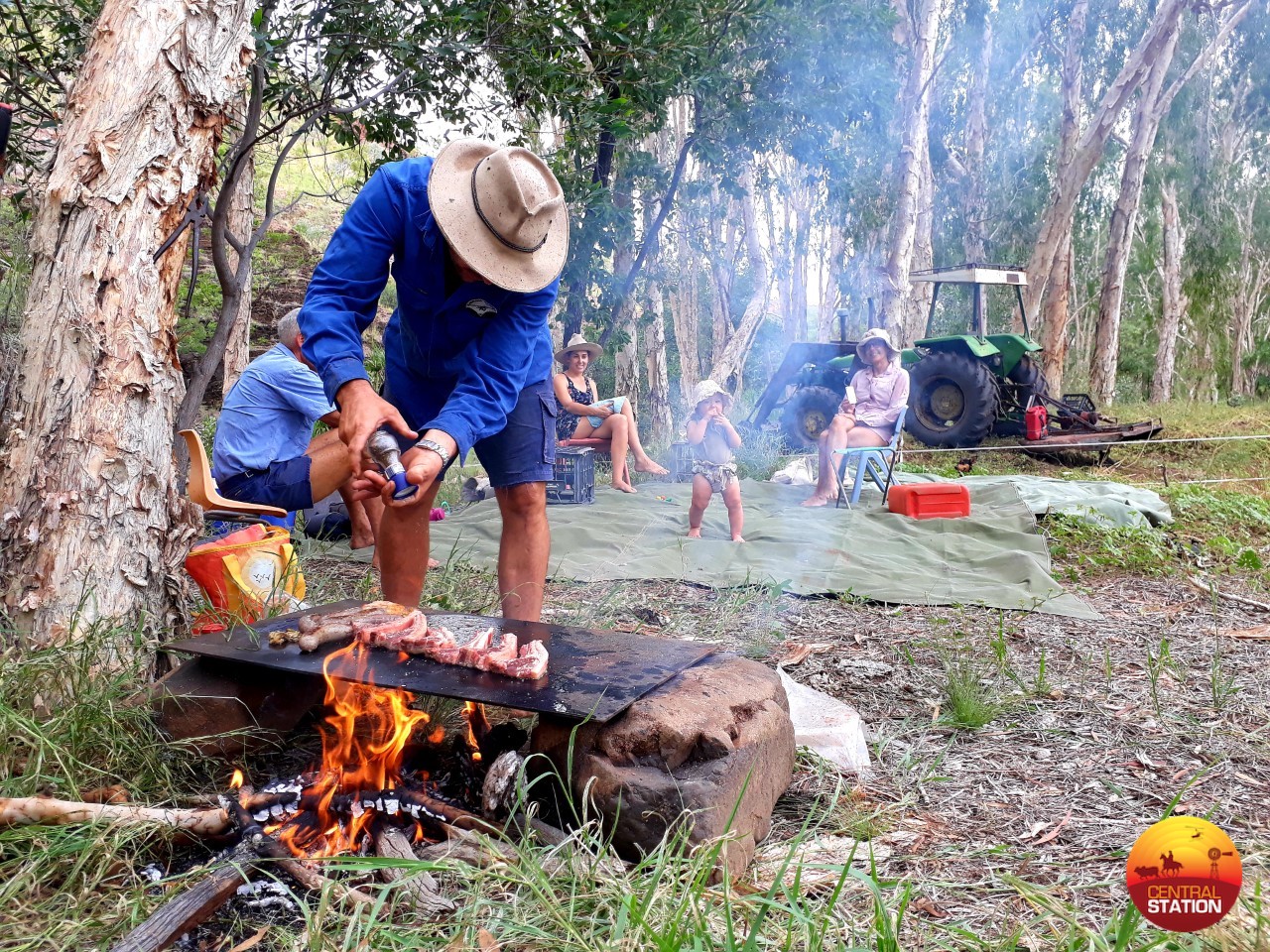 The great smell and flavours of good fresh meat on the hot plate. To be enjoyed in the bush.
The great smell and flavours of good fresh meat on the hot plate. To be enjoyed in the bush.
Unlike many of our city dwelling cousins, people on the land are usually more involved in the greater, or entire part of their unique food story. From the items that get bought, then transported to the station (with all the logistics and mishaps that can happen), to the food that’s hunted, collected, grown, fished and prepared at home, and not forgetting the cooks, the kids, the backpackers that have never had to cook before… “Boil the billy there mate, but don’t boil it hotter than 100 degrees”. Here are some of my stories of memorable meals.
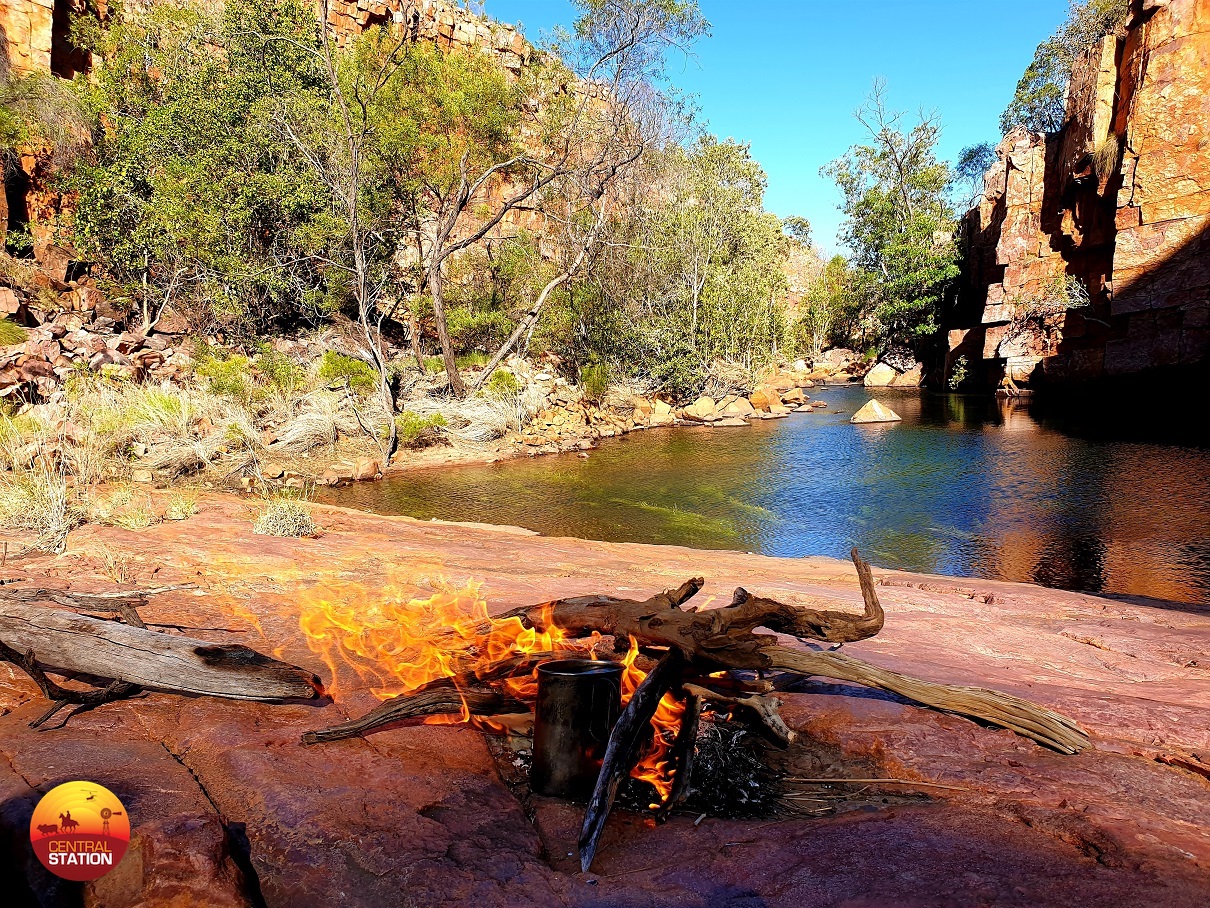 Fresh billy tea and damper in the bush.
Fresh billy tea and damper in the bush.
At Kachana Station we prepare our own beef, have rivers with fish, our own eggs, the odd rooster and a pathetic excuse of a veggie garden. Food is what makes it all happen and is in itself why it all happens.
We live ‘off the grid’, and with no powerlines, electricity is a big challenge. We run mainly on solar energy with some generator back up as needed due to high power demand or lack of sunlight for extended periods during the wet season.
We have a cool room, but no power to it yet. We do have fridges and freezers – mainly to keep the homebrew cold and some meat frozen. A great invention (both beer and refrigeration)!
All fresh stuff is managed in terms of quantity, how it gets stored and most importantly when it gets eaten. This is supplemented with the larger amount of produce consisting of mostly tinned food, flour, sugar, rice, and pasta, along with all the herbs and spices being dry storage or preserved. These are all kept in large quantities as supply runs are not a weekly occurrence.
Not many situations require one to get as creative as the times the pantry runs low because the re-supply of fresh food had to be pushed back. For example, uncle Danny once fed half a dozen grown men on a meagre handful of spaghetti stretched delicately with a couple of pinches of sand – there was even leftovers!
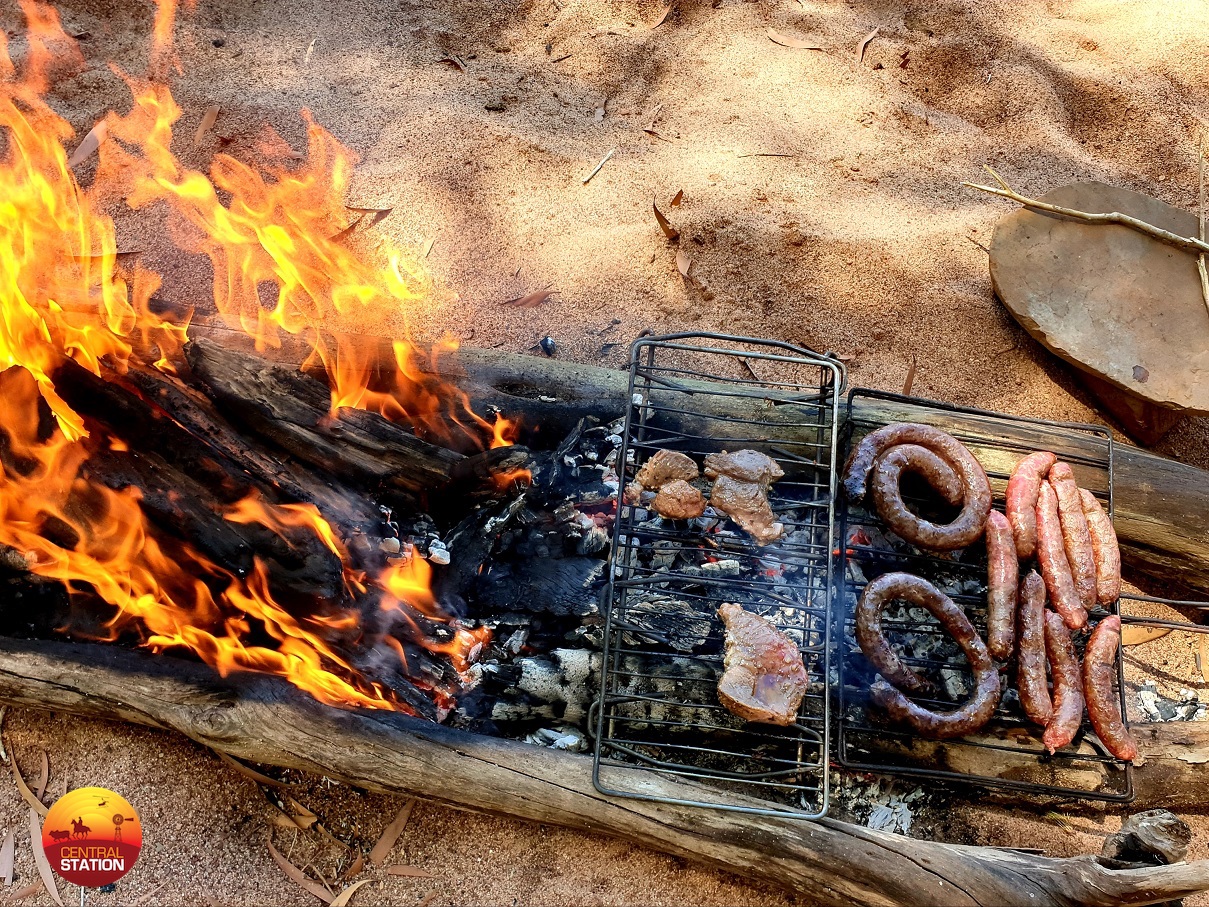 Homemade sausages and some steak best cooked on the coals.
Homemade sausages and some steak best cooked on the coals.
We get a killer (fresh beef) whenever the meat runs low and that alone always becomes an event. One of the biggest debates among meat producers and consumers is the quality of meat. How does it eat and why? Is it the breed? The sex? The age?
Seeing as I’m writing and this is my story I’ll say it how I think: I prefer to eat shorthorn.
Boom! There it is – I said it! Take your Wagyu back to the Mardi-gras! (Just lost half my readers…)
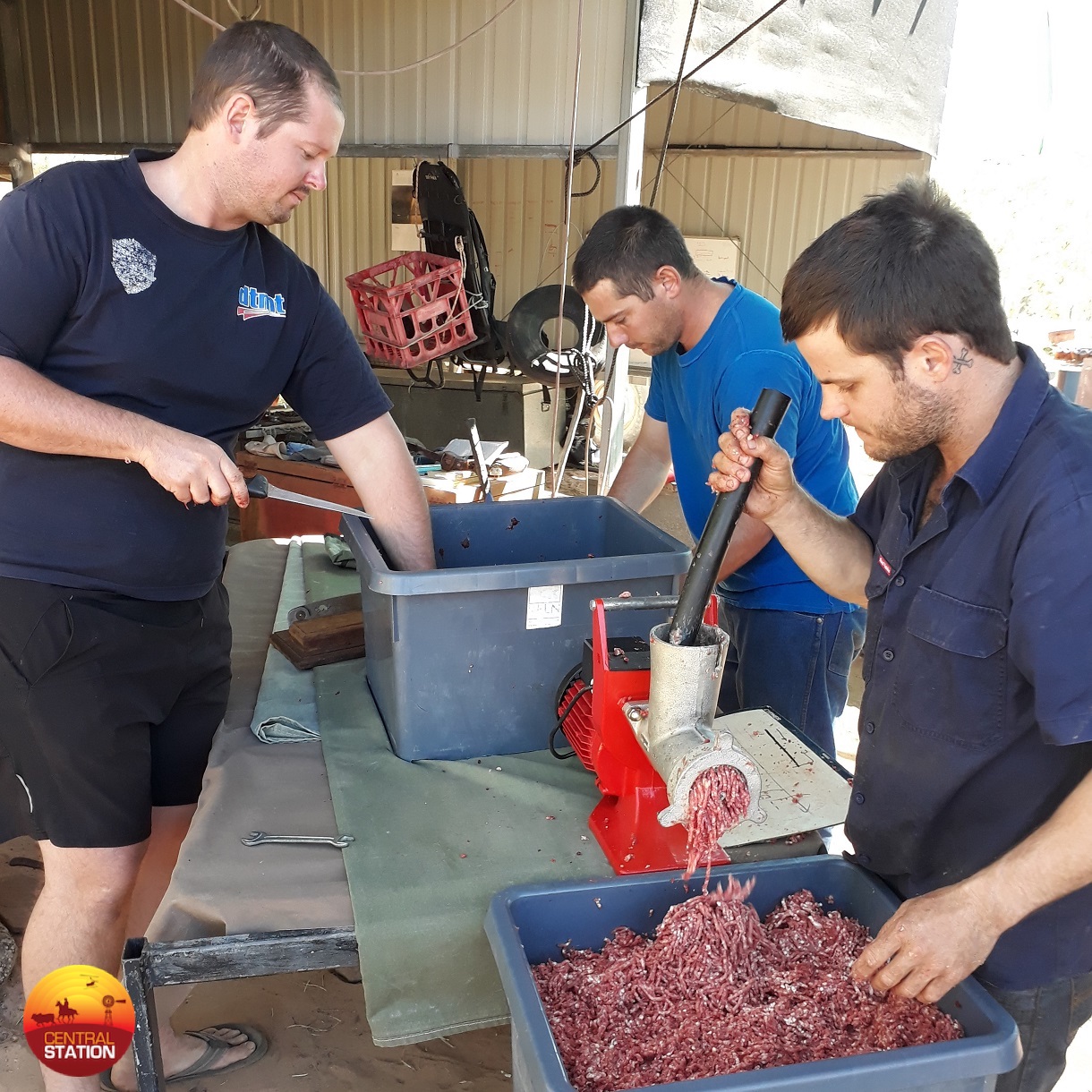 At Kachana we butcher our own meat, make our own mince, sausages and biltong.
At Kachana we butcher our own meat, make our own mince, sausages and biltong.
“Oh hi! Glad you stayed on!”.
I also agree with theories that suggest that the bigger variable affecting the quality of meat, is that what happens between the paddock and the plate i.e. Was it stressed? Was it bled properly? Was it hung? How was it hung? What temperature? How long was it hung for? Was it dressed properly? Or was it bouncing around on the back of a ute for six hours on some gum leaves?
I shot an old (and I mean really old) bull when we were hiking once. The kidney fat was almost non-existent and a yellow colour that was closer to grey itself! The nerves had not even stopped ticking by the time we had the fillets cut into steaks on a fire that was lit by some of the lads while others were still dressing the hide and bones that where but all that remained of a once big and strong animal.
The fat was rendered in an empty can of ‘SPC Two Fruits’ and salt and pepper were applied as the steaks where cooking in the boiling fat.
I tell you the truth when I say that the meat of this particular fillet steak melted like butter, as the knife, the fork and my teeth went through it. Unbelievable!
Other times the cuts so carefully hung, packed, stored, and marinated with oils and herbs, can still eat like boot leather! “Oh, but that flavour!” someone or myself will be quick to point out! One of my fondest meals was sitting with a good mate under a boab tree eating fresh rib bones cooked on the coals and I don’t know if it was the rum but at 2am eating yet another serving I think we both agreed if heaven spilled over to earth it was in the form of a rib bone cut from that fat cow on the banks of a particular creek in the Kimberley!
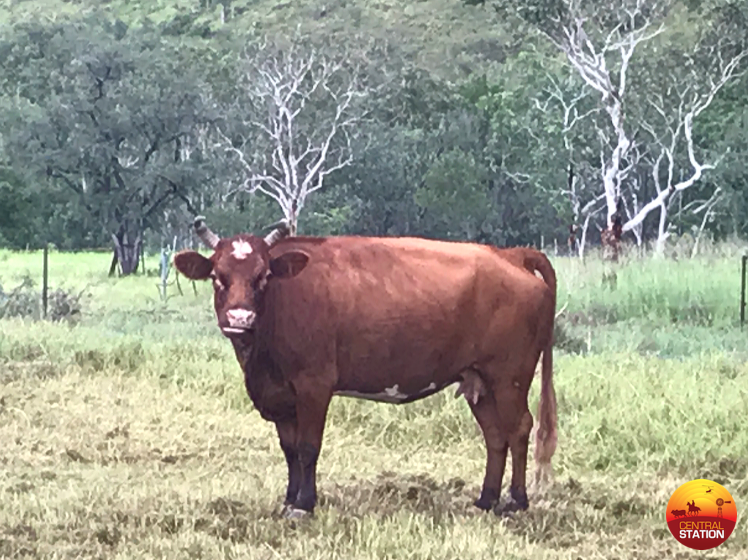 I like eating a healthy shorthorn cow.
I like eating a healthy shorthorn cow.
Eating out. The food when you’re away from the homestead is always an excitement. Forrest Gump’s mum nailed it with her saying about the box of chocolates, “You just never know what you’re gonna get!”
One fine day in the stock camp, “This is really good!!” I lied as I shovelled another spoonful of long expired baked beans and canned spaghetti into my mouth. “Those dates are only a recommendation anyhow” was confirmed by the camp cook. “What’s for lunch?” was asked. “Well let me see…. I have corned beef…. some more corned beef… oh and wait some of yesterday’s corned beef. And yellow pickles” – “Now we’re getting flash!”
My cousin from Switzerland who has dined in restaurants where the kitchen mice eat better than I do, gave a look of horror as I opened a can of Spam “Want some bully beef? Did they teach you, that us Australians saved Europe in the first war? You know, they lived on this – you’re welcome for that.” The tears were not far away when the damper came out of the camp-oven looking like a bushfire burnt cow paddy, it sure tasted about the same.
Good judgment comes from experience and experience, well that comes from burnt damper. That’s how cooking on the fire was learnt, and continues to be learnt. Those who spend time in the “Kachana Stock Camp” get the afternoon off but as long as dinner is prepared and cooked. To cook on the open fire and coals is almost an artform. An art that is fast disappearing across the world I might add.
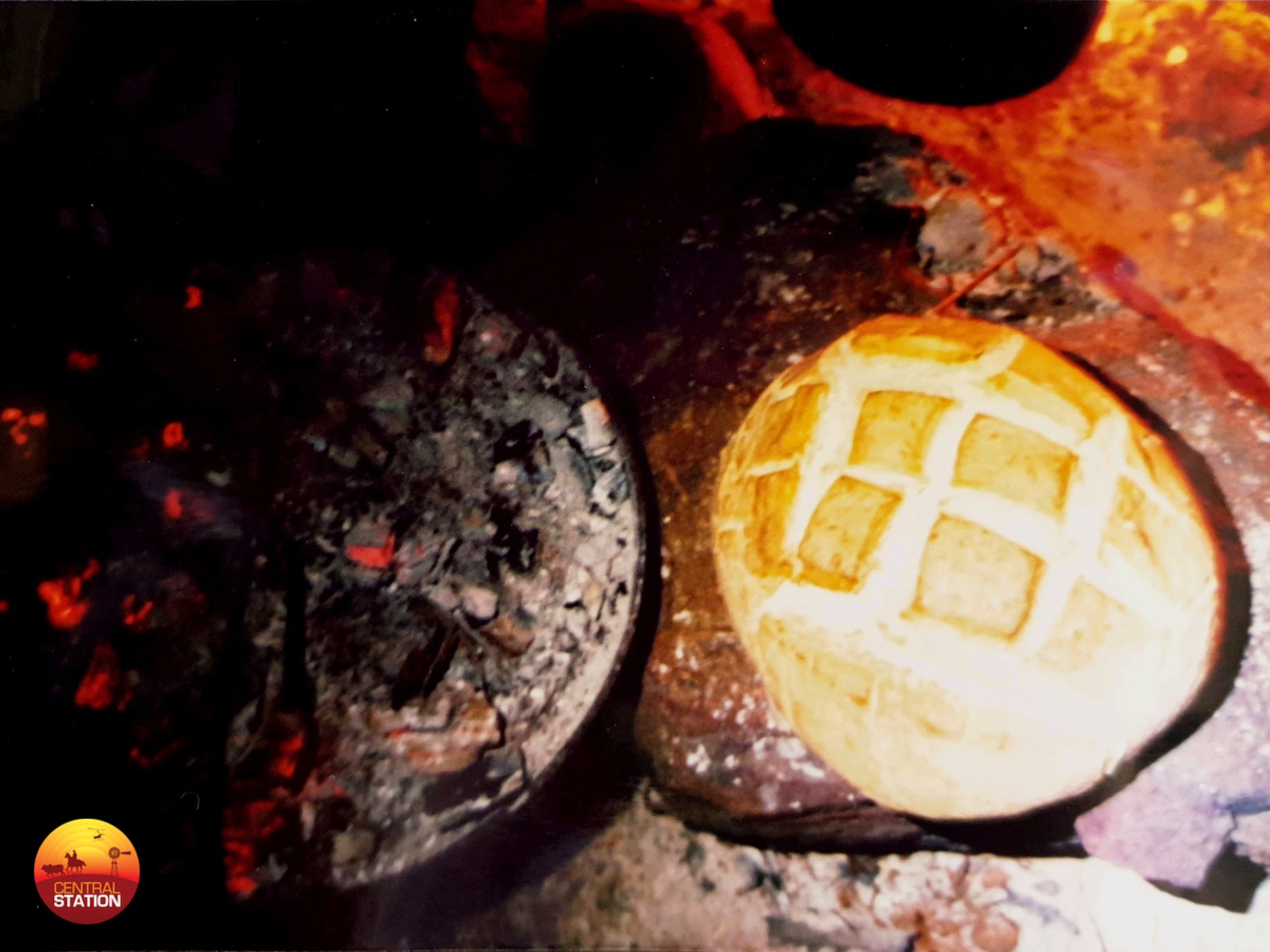 Perfection comes with practice! Good camp-oven cooking is an amazing way to have a meal.
Perfection comes with practice! Good camp-oven cooking is an amazing way to have a meal.
As with a lot of bush kids my sisters and I were inspired when the ‘School of The Air’ sent out the old VCR cassette ‘Les Hiddins – The Bush Tucker Man’. This opened up an amazing pantry of food that was incredible, amusing and not always tasty for all involved. But finally, we never got into trouble for eating between meals. Well we ate the little wild passionfruit, figs, white berries, wild grape and water lilies. We licked the nectar off the Grevillia flowers, made jam with Conkerberries and even parts of the Pandanus palms were tasted!
We found Boabs to be a remarkable tree with not one part being toxic. We tested the little green grasshoppers on the airstrip, these when bitten off at the head and eaten raw tasted like banana. My sister however remembers them tasting like sugar cane.
Fish were caught, yabbies trapped and as we grew older, under strict instruction in regards to conduct and responsibility, we negotiated hunting grounds with Dad. This is when we discovered that bowerbirds make for a very chewy meal when roasted. We found that the meat on some birds is actually red and not white like that of a chicken and that the biggest looking bird ends up reducing by around two thirds in size once they have been plucked.
Hunting is a great way for a kid to learn to come to terms with disappointment. Indeed, we came home empty handed more than once. Dad would be quick to inform us to prepare for a dingo’s dinner. “A drink of water and a good look around!”
Fortunately, Mum would always be prepared for the times our hunting expeditions were insufficient to supply the energy requirements of growing kids. Many a life lesson was learnt!
I have tremendous admiration for those before us who relied solely on their own hunting and gathering skills to survive.
Spinifex pigeons for example have amazingly succulent breast meat but require an accurate marksman as these too, once plucked, reduce to the size of your palm so no ‘body’ shots are allowed. This delicacy I once sampled while adventuring with a friend. I scored two of these birds earlier that morning and we would have had a great feast were it not for the luckiest pigeon in the world. As we walked, I had the two birds previously collected hanging by their legs from my backpack, and my good mate was put in charge of securing a few more. Traveling along we hit the jackpot! Scotty lined up one of the 20 birds feeding before us and let fly the first round, it whizzed off into the distant cane grass covered hill, as the pigeons fluttered to a rock nearby and half a dozen of his mates departed the scene. Round two quickly followed, the first with no apparent results, that is, apart from a few more pigeons making a quick exit from the stage. Still the target stayed. However, when the third, or perhaps fourth bullet bounced off the rock that it was perched on, even the luckiest pigeon in the world flew off for feeding grounds elsewhere, leaving behind two disappointed kids and another life lesson was learnt by me – be in control of your own food security!
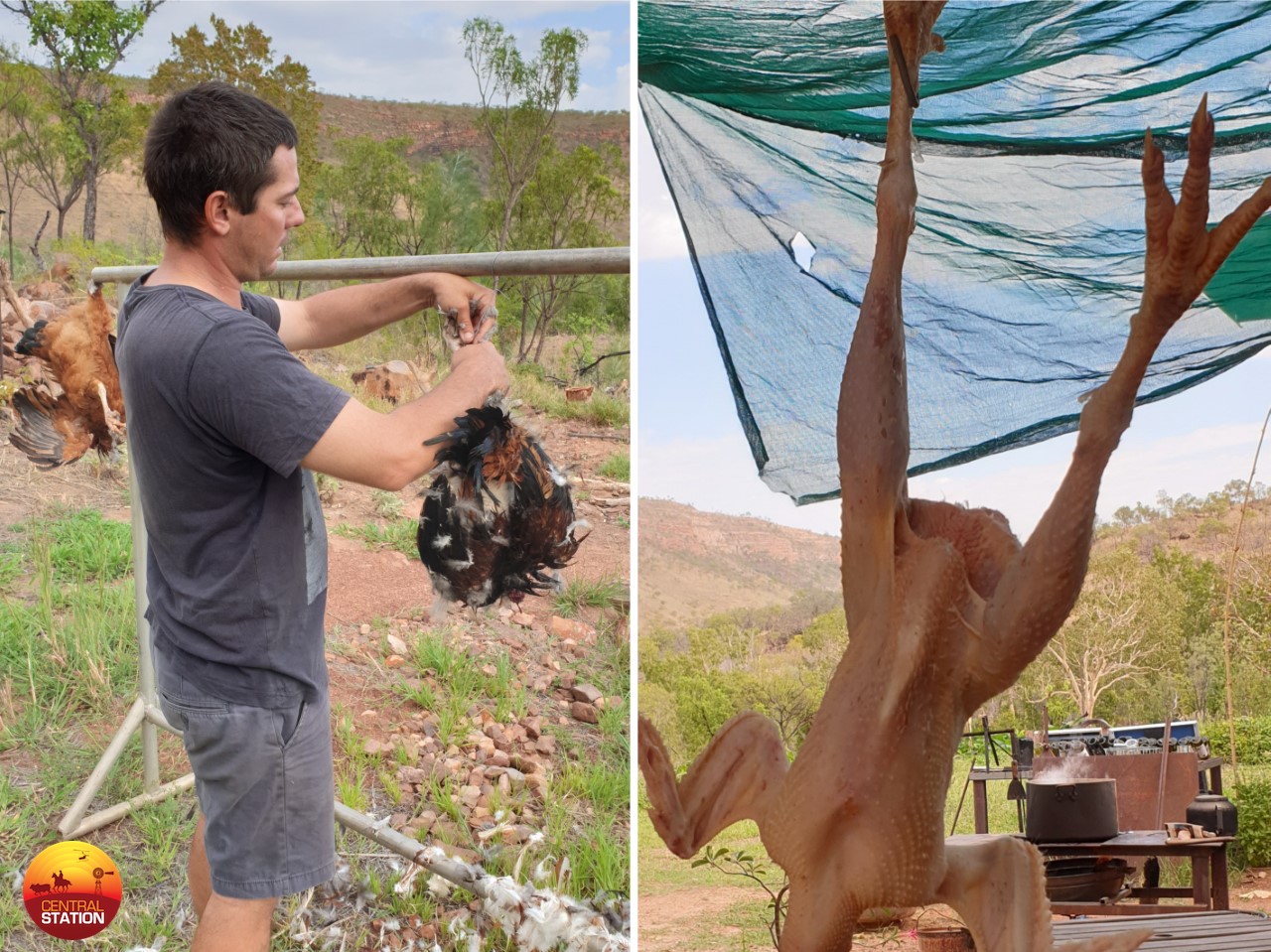 Astounding how a big bird can reduce in size by so much with just a few plucked feathers.
Astounding how a big bird can reduce in size by so much with just a few plucked feathers.
King Brown snake, if prepared correctly with the skin, head, venom glands and all intestines removed, is a great meal when served as a stew. The snake is cut into sections almost a foot long. As the pot boils, muscles of meat, running lengthways across the snake’s numerous ribs, isolate into strands not unlike fettuccine pasta. Its flavour is hard to describe but it sure was a pleasant and most memorable meal.
Barramundi, black bream or other fish fresh on the coals or wrapped in paperbark and buried in the hot sand under the coals and fire is always a good feed while out fishing or camping. Young wallaby or kangaroo is also a good cut but can leave you with a sore jaw from chewing if you don’t cook it correctly. With regards to bush tucker I believe that preparation is key and many a good recipe was sadly lost to the sands of time and extinction of old cultures.
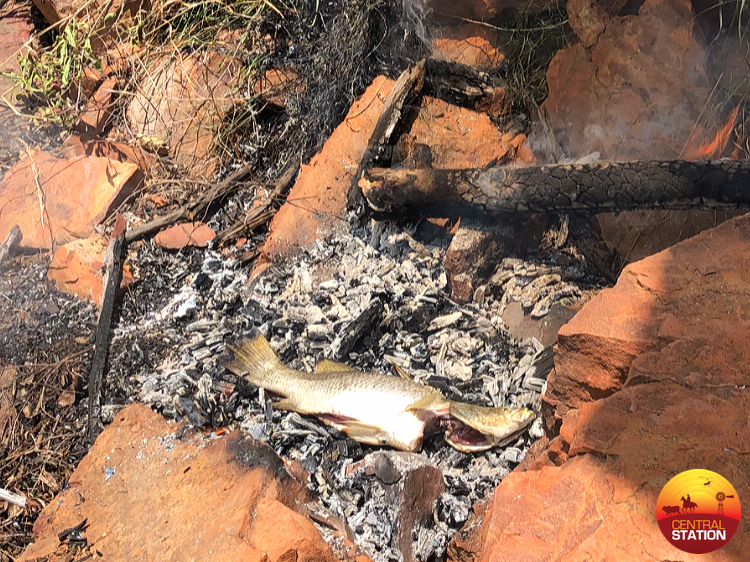 Fresh barramundi cooked whole on the coals. When the fish is cooked, peal back the skin and eat.
Fresh barramundi cooked whole on the coals. When the fish is cooked, peal back the skin and eat.
In Australia we are lucky, we have food. We have room and we have opportunity. When the toilet paper gets stripped off the shelves in the shops, those living in the concrete jungle should be thankful to know that in the country we are still dealing with the ongoing challenge and the story of your food production.
That challenge is; acquiring, mastering and passing on the skills and ability to produce the food to feed ourselves and keep up the food supply to those that do not have the means of producing it.
That’s not to say we couldn’t get better at producing food or reducing the environmental foot print of our practices, nor the transition to more sustainable production methods.
I believe these are lucky problems to have and I think there shouldn’t be any producer out there not dedicating themselves to working on better food outcomes.
However, we can all do our bit; if you value good healthy food, support those that are producing it. And most importantly inform yourself about the story of your food from the paddock to the plate.
So please, don’t forget as you have your next meal today, give thought and thanks to those who produced, cared for and prepared it. Bon Appetit!
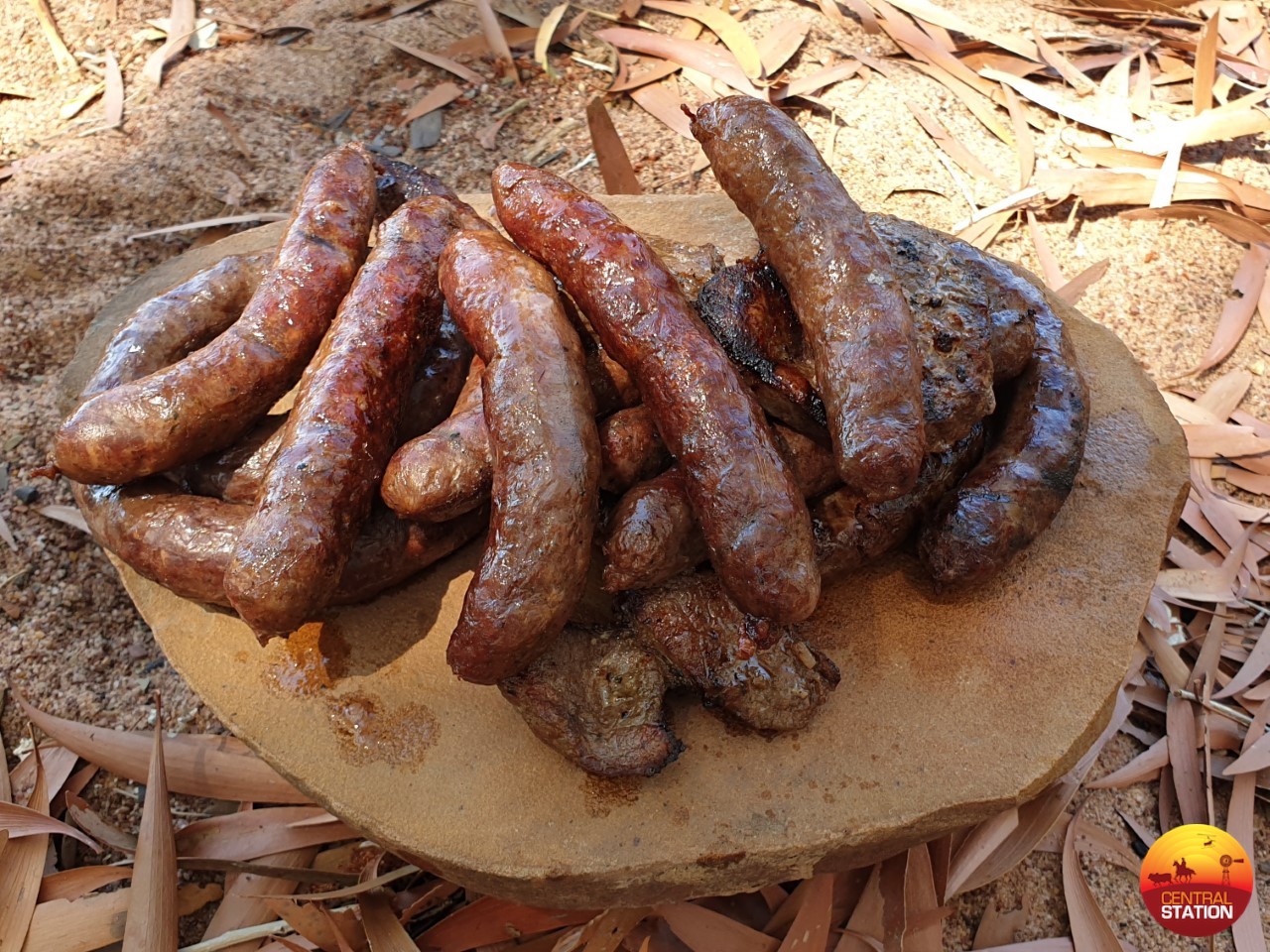 Homemade sausages and steak served on a big flat rock.
Homemade sausages and steak served on a big flat rock.
